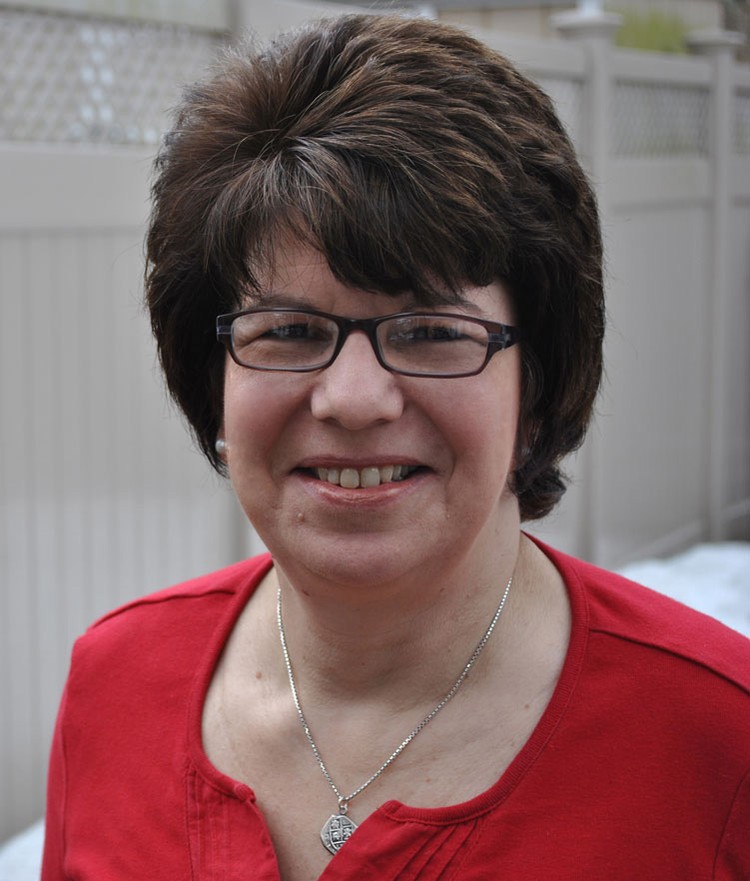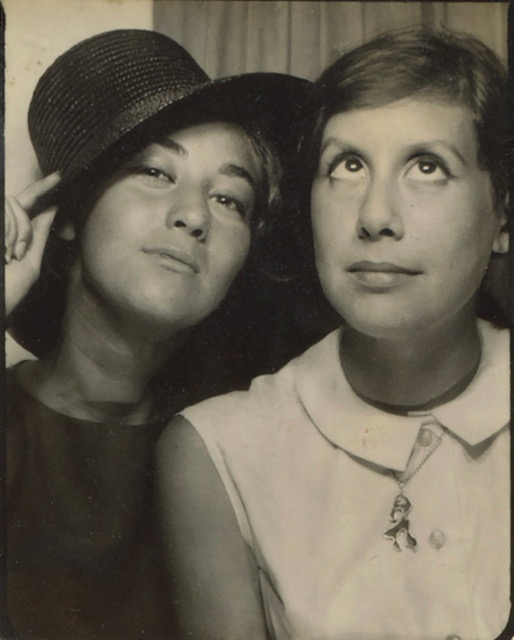In Woody Allen’s film Blue Jasmine, a once-wealthy socialite (Cate Blanchett) sits on a park bench muttering to herself, having lost everything. With no money, no real job skills and no family to help, all she has left is a battered designer suitcase, a reminder of what once was.
Jasmine symbolizes many women’s worst fears about aging: ending up alone, penniless and on the street. And if this sounds like your worst nightmare, you’re not alone. There’s even a term for it—bag lady syndrome—and it’s particularly touchy for baby boomer women, who feel the pressure of impending retirement.
According to the Institute for Women’s Policy Research (IWPR), 66 percent of women aged 45 to 59 and 52 percent over 60 worry about not having enough money to retire on. Many women say they want to learn more about investing but cite lack of financial knowledge and experience, as well as uncertainty over where to turn for guidance, as major roadblocks.
“Even women who are very successful or are the primary breadwinners in their families, somewhere they have it in their minds that they are going to wake up some day and will have lost it all,” said Kerry Hannon, a financial expert and author of A Guide to Retirement for Women (1996) and Suddenly Single: Money Skills for Divorcees and Widows (1998).
Even celebrities like Katie Couric and Oprah Winfrey have candidly admitted that they lose sleep for fear of becoming destitute.
“There’s a lack of knowledge and comfort and confidence about investing among many women. Women tend to think about money in more emotional ways than men do. We get caught up in this whole idea about money and power.”
When it comes to talking about money and investing, women often react “like deer in the headlights,” Hannon said.
What Lies Beneath the Fear
Bag lady syndrome affects women regardless of net worth or financial savvy, according to clinical psychologist Nancy Molitor, PhD.
The 2014 American Psychological Association (APA) survey Stress in America found that “women at all points along the financial spectrum say they lie awake in bed at night and ruminate about finances,” said Molitor, who is also a coordinator for the APA’s public education campaign. Even celebrities like Katie Couric and Oprah Winfrey have candidly admitted that they lose sleep for fear of becoming destitute.
But why would such financially successful women worry about destitution? Their fears likely go back to childhood, Molitor said. Perhaps a woman grew up poor or her father lost his job or there was a single-parent household. In many cases, lack of money was associated with loss and difficulty. If the family had means, perhaps money was doled out grudgingly, becoming associated with control or even with love.
It’s also typical to meet women who were sheltered from financial reality as they grew up. No one ever talked about money; it seemed to just be there.
“[Money] was used to solve problems but there was no discussion about jobs or saving for a rainy day,” Molitor said.
“All of these early life events get encoded in our brain and become tinged with emotion, usually negative, and women learn money is essential for happiness. If you have it, you’ll be OK, and if not, you’ll be out on the streets.”
Even starting very late, many women can create a more secure financial future for themselves.
Financial worries can affect more than a good night’s sleep. Chronic stress can raise blood pressure, worsen cardiac and gastrointestinal problems, weaken immunity and cause migraines, as well as contribute to depression and irritability.
Fortunately, while the fear and lack of financial know-how may seem insurmountable, the biggest roadblock is just getting started. And sometimes life just forces the issue.
For 60-year-old Adrienne Wald, EdD, learning about finances happened only after her mother became divorced—and terrified.
“I went back to school and got my MBA specifically to know how to manage money and health costs after I saw what happened to my mom. She was afraid of being out on the street because she really didn’t know anything about money and wasn’t prepared.
“I never thought I’d have to worry. I’ve always worked, had nice income, nice career and a pension,” said Wald, a semiretired nursing professor and marathon runner from Westchester, NY. But when an accident left her sidelined for some time, she began thinking about her own longevity and money.
“I think about things like how long will I live? I don’t want to become dependent on someone; I don’t want to be a burden. Life is so unpredictable. A lot of things we plan on or count on are very uncertain.”
It’s Never Too Late
It’s often not until women are past age 50 that they have time to focus on retirement issues, said Jennifer Streaks, financial commentator and writer. Women are too busy being pulled in many other directions—caring for aging parents, raising children, running a household and working. They don’t concentrate on themselves until later in life, when the kids move out or the parents are deceased.
“Some women realize they’re not as astute investment-wise as they should be, and that’s where that fear comes in,” Streaks explained. “It’s not that you can’t do something about it, but that initial realization of what’s ahead, or fear of making mistakes, leads to panic.”
Women generally have smaller retirement savings than men, Streaks said, because they tend to be more conservative investors. They also come in and out of the work force and earn lower wages. According to the Women’s Institute for a Secure Retirement (WISER), 75 percent of US women earn less than $40,000 per year and 60 percent earn less than $30,000 annually. Half of all working women are in traditionally female, relatively low-paid jobs without pensions. Those with pensions receive only half of the benefits that men do. Women earn about $0.77 for every $1 earned by men—a lifetime loss of over $300,000.
The good news, experts say, is that many women in their 50s, 60s and even 70s can take solid steps toward creating a more secure financial future for themselves, whether through traditional retirement savings plans or innovative methods to generate additional income and cut expenses. The path you’ll need to take, however, is a very personal one.
Going It Alone
For some women, just taking a more active partnership role—gaining some control and knowledge—in the family finances may alleviate a bit of worry. But that’s not an option for a good portion of the population.
“Panic set in when I turned 50,” said Liz Scherer, a health and wellness strategist. “I have no illusion I have enough money to retire on. I’m 54. I’m trying to be realistic. What can I live on?”
Scherer, like nearly half of women in the United States, is single. According to IWPR, “virtually every woman will spend at least part of her adult life as the sole supporter of herself and her family.” About 36 percent of boomer women under 65 are separated or divorced; another 17 percent are widowed.
Scherer knew she had only herself to rely on and wanted to take immediate steps to secure her finances for the long haul. So she made some major lifestyle adjustments, including a career change. She moved from a 500-square-foot apartment in New York City to Silver Spring, MD, where she purchased a four-bedroom house for “a fraction” of a comparable home in New York. Her cost of living decreased considerably and she gained more space and time for a social life.
Scherer also began working with an investment advisor to create a long-term plan.
“It took a few tries before I found [an advisor] I was comfortable with. Now I have a real partner,” she explained.
Getting a Better Night’s Sleep
The number one thing women should do is educate themselves about basic finances, said William Farrell, financial advisor with UBS Financial Services, New York. He frequently works with boomer women who don’t think about money or understand their financial picture until they’re widowed or divorced.
“They just weren’t involved. Everything was handled by the husband,” he said.
Farrell encourages women of all ages to meet with a certified financial advisor or planner to discuss life goals and to develop a plan that takes into account what they need versus what they want.
Financial commentator Streaks agrees while advising women to choose such planners wisely.
“Try to only work with fee-for-service planners,” she said. “Make sure they have your best interests at heart and don’t just move assets from one place to another because that’s how they get paid. These advisors work for a set rate, rather than earn a portion of their income by selling specific stocks.
“A good planner will review everything from retirement accounts to insurance coverage on your home or car, your health—really anything that can come into your life and cause a financial outlay.”
The National Association of Personal Financial Advisor is a good place to start your search. Family and friends also can make trustworthy recommendations.
By the time you’re 65, you should be looking to downsize—both your lifestyle and your expenses, Streaks said. It might be time to sell that huge house and move to an apartment. Pay off credit card debt and analyze monthly expenses: small changes add up. Trim extra cable channels or eat out less often.
The rule of thumb for retirement is to live on 75 percent of what you earn now.
As you get older, financial security comes down to focusing on the basics—housing, health and eliminating debt.
“Break down what’s really important to you and put those savings into something like a gym membership, to keep your health going,” Streaks advised. “[And] make sure your health insurance is intact. Not having enough insurance or the right insurance, or high deductibles, will really decrease your savings.”
The Employee Benefits Research Institute estimates that at age 65, a single woman will need at least $139,000 in savings just to cover out-of-pocket lifetime retirement health expenses. This assumes typical prescription drug costs and no catastrophic illness.
Because women live longer than men and often have multiple chronic diseases, they should consider purchasing a long term care insurance policy while in their 40s or 50s, when premiums are still low, Farrell advised. Nearly 70 percent of people over age 65 eventually need some long term care.
As you get older, financial security really comes down to focusing on the basics—housing, health and eliminating debt, Streaks said. If you put a plan in place now, it will be much easier to ease the fear of ending up on the street.
That’s what Maribel Torres realized. Torres, 51, married young and never went to college. She worked part time but was primarily a stay-at-home mom for her two daughters. A divorce in 2006 forced her to take a hard look at her options and financial future.
“Although I was working in an office, I didn’t think I had time to save enough for the future through the traditional way,” Torres said. “I’d always be worrying about that and lose sleep at night.
“I was never taught how to make money work for me; I had to figure this out myself.”
After reading a magazine article about creating income, Torres was inspired to get creative about her financial future. She scraped together enough to purchase a two-family house in a middle-class, Long Island neighborhood. She and her kids lived in the basement apartment, allowing them to rent the other apartment, which helped significantly with the bills. This got Torres to thinking about what else she could do to secure her finances.
She launched her own business as a personal trainer and wellness coach, which “put me in charge of my own future.” Now an empty nester, Torres moved to Kingston, NY, where the cost of living is significantly less than on Long Island. Torres still rents out her Long Island house and aims to purchase additional rental properties as part of her long-range plan to create ongoing income.
If she hadn’t faced her fears or had been unwilling to make lifestyle changes, Torres might never have been able to say she no longer worries about being out on the street or outliving her money.
“I sleep well at night. There’s always a solution.”

Freelance journalist Liz Seegert has been writing about health for nearly 30 years. Her work has appeared in Consumer Reports and Kaiser Health News, on the AARP and New America Media websites and on WBAI-FM/Pacifica Radio. She covers aging for the Association of Health Care Journalists. A native of Queens, NY, she loves to walk with her rescue dog, Duke. You can follow Liz on Twitter: @lseegert.



